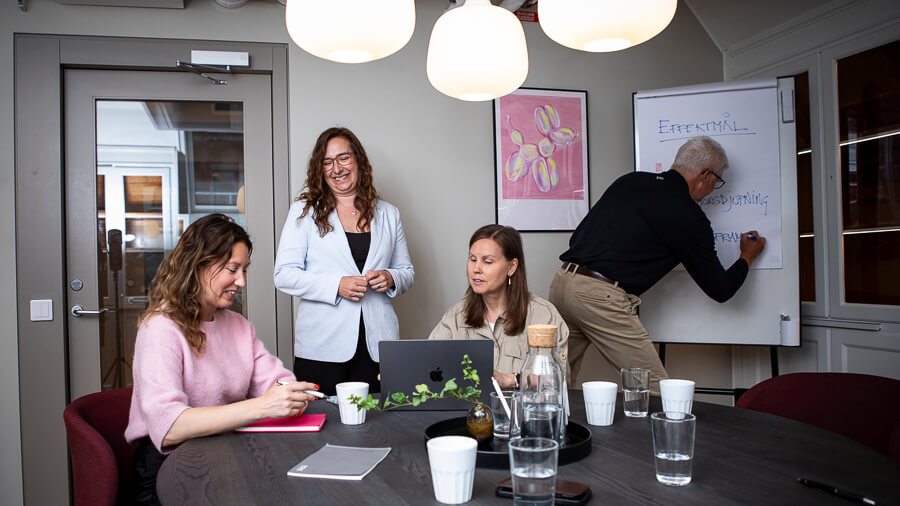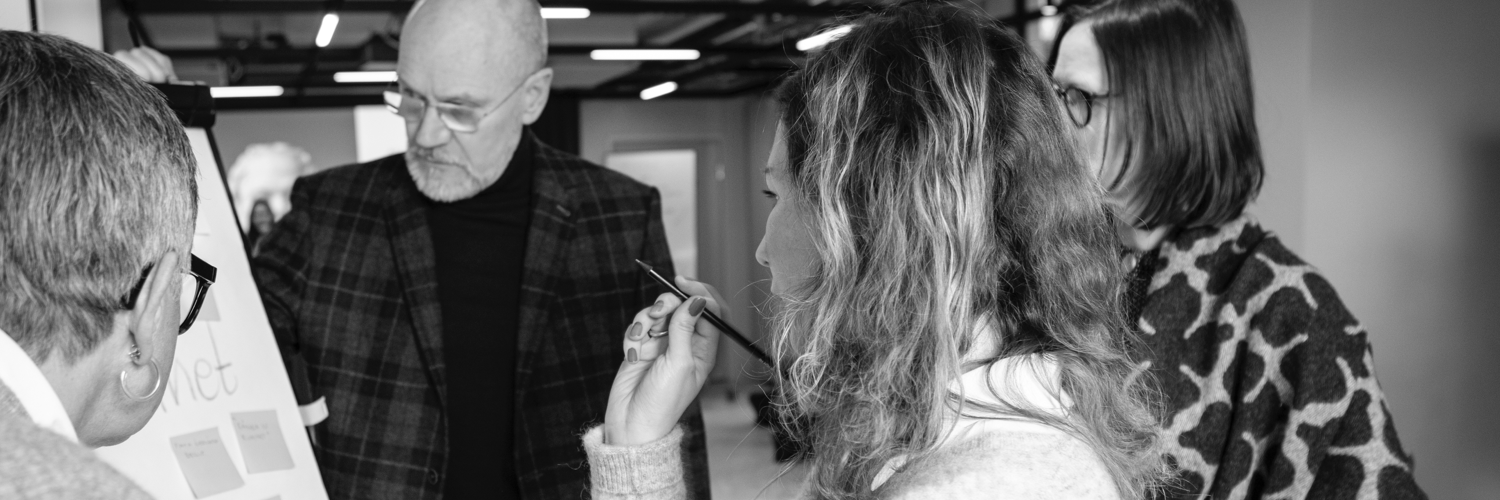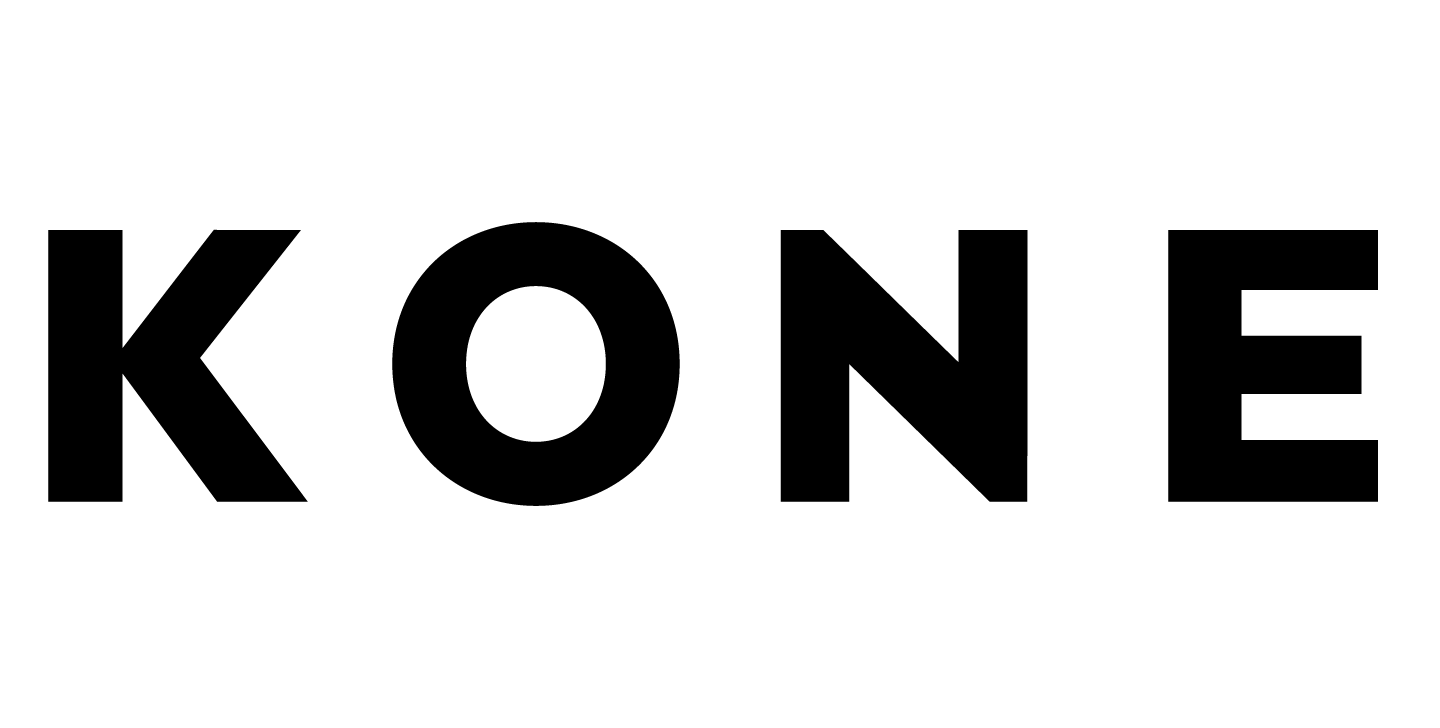Build Success Through Effective and Cohesive Workgroups
Working in a team is like dancing – it requires coordination, collaboration, and a shared rhythm.
We know that every team faces different challenges and needs. Based on that understanding, at Move, we tailor our development processes according to the type of group we meet. We develop management teams, project teams, and workgroups through experiential training that fosters insight and awareness of the group’s strengths and challenges, behaviors, and patterns of action. Our approach to team development helps the group create a shared vision of the mission, establish common rules, clarify working methods, and lay the foundation for a good collaborative climate.
Our process is grounded in research, utilizing proven methods and tools to create awareness, self-understanding, and desired development. In our programs, we often use a behavior and communication profile as a basis for self-awareness of individual behavior and patterns of action, as well as to understand the group’s differences and strengths.
Team development is the key to creating and maintaining successful teams that achieve goals, produce results, and enjoy working together. At Move, we help you get there.
Well-Functioning Teams Lead to Successful Organizations
Building and maintaining an effective team is crucial for an organization’s success. It is a process that focuses not only on individual performance but also on how individuals can collaborate to achieve common goals. Effective groups are not only a source of creativity and engagement but also a vital part of creating results and facing the challenges that an organization encounters. Here, you can explore our perspective on team development and get tips on best practices for creating and strengthening workgroups.
Book consultation
Sometimes, it's good to gain a new perspective on a matter. What challenges are you facing? Let us be your sounding board.
Book a free consultation here.
Why is Team Development Important?
Team development is an investment in the organization’s future. An effective team has the ability to solve complex problems, promote innovation, and create a positive work environment. When individuals learn to collaborate, a culture of trust and mutual respect is established, leading to increased productivity and performance. In a time of rapid changes and increasing complexity, the ability to work effectively as a group becomes even more critical to overcoming obstacles and contributing to progress in the organization.
Team development aims to improve and optimize how a team functions. It is not just about collaboration but also about increased awareness of each other, understanding strengths and weaknesses, and, most importantly, creating an environment where psychological safety and trust flourish. The goal is to shape high-performing teams that not only achieve their goals but exceed them while also thriving and enjoying their work in the organization.
Benefits of Team Development
Investing in team development provides many long-term benefits. Effective groups are more profitable, have higher well-being, and contribute to creating a positive work culture.
Here are some key benefits of investing in team development.
- Result-oriented teams: By strengthening the team’s ability to collaborate and communicate, its productivity increases, allowing the team to achieve desired results and perform better together.
- Increased employee satisfaction: A well-functioning team creates a positive work environment that leads to increased satisfaction and well-being among employees.
- Attractive employer: Companies that value and invest in team development become attractive to sought-after employees seeking an environment with development, results, and security.
- Reduced conflict levels: By developing an atmosphere of open communication with high ceilings and psychological safety, the risk of conflicts decreases, promoting faster and more constructive solutions.
How Does Leadership Affect Team Development?
Leadership plays a crucial role in the group’s development. A good leader provides direction and purpose for the team, fosters a culture of trust and openness, and handles conflicts constructively and swiftly.
By investing in team development, your team gains the tools for success, structured growth, and increased insight into team dynamics, conflict resolution, and effective communication.
Measurable Team Development for Continuous Improvement
When Move conducts team development, it often includes mapping the team’s strengths and development areas. By using tools such as the Team Quality Survey, we conduct a digital measurement to determine the team’s current state. By also conducting a follow-up measurement, an objective assessment of the effects and changes the team has undergone, and the results it has achieved, becomes possible.
Since 2009, in close collaboration with the American psychology professor Dr. Susan A. Wheelan, thousands of measurements using her validated instrument GDQ have formed the basis for hundreds of team development processes in various private and public entities, primarily in Sweden. Team development processes have been tracked over time to trace measurable changes and explore which areas and issues have the greatest impact on a team’s effectiveness, well-being, and quality.
It has been shown that the factors measured by a TQS measurement affect a team’s ability to function effectively. Using a survey as a starting point for a dialogue about everyday changes is a success factor for a team’s development. The purpose of the Team Quality Survey is to provide relevant suggestions on how collective capabilities can be developed.
Research-Based Methods for Optimal Results
To ensure that team development is scientifically grounded and based on proven methods, we rely on research in team development from figures such as Jung, Massey, Parker, and Shutz. This includes the use of behavior and communication profiles to increase awareness of individual behaviors and communication styles and to promote an understanding of the group’s diversity and strengths.
Mapping the phase or stage a group is in its development is another central part of team development. Here, we use Dr. Susan A. Wheelan’s Integrated Model of Group Development (IMGD), which helps us understand the various phases and development of groups. Bruce Tuckman refers to the phases as Forming, Storming, Norming, Performing, and Adjourning. Will Shutz’s FIRO model, used in Understanding Group and Leadership (UGL) programs, is based on similar concepts. Team Quality Survey also draws on Dr. Susan A. Wheelan’s validated instrument GDQ, which has been the foundation for many of our team development processes.
What Makes a Well-Functioning Team?
A well-functioning team is characterized, among other things, by effective communication. Members understand each other’s needs and actively work to keep each other informed. Communication is one of the most important keys, where openness and clarity are prioritized, creating an environment where each member feels comfortable sharing their thoughts, ideas, and opinions. Through effective communication, a culture is fostered where members are responsive and share constructive feedback, creating an atmosphere of both mutual respect and understanding.
Another clear characteristic is collaboration. The team collaborates seamlessly to achieve its common goals without unnecessary conflicts. A crucial part of reaching this state is clear goals and roles. Each member should understand their contribution to the team’s overall purpose and how their work integrates with others in the organization. Through clearly defined responsibilities and expectations, the risk of confusion and conflicts is reduced, allowing the team to collaborate and focus on its goals, perhaps even surpassing them.
A third sign that a group is well-functioning is the degree of flexibility. A well-functioning team is adaptable and can handle changes with ease. Flexibility and adaptability are crucial parameters in a fast-paced world, and the ability to adapt to changes and manage complexity becomes crucial. Effective groups see changes as opportunities rather than obstacles and are willing to adjust based on new needs to meet new challenges.
Team culture plays a crucial role in shaping an effective team. A healthy and positive culture encourages mutual support and creates an environment where members feel motivated to contribute to the group’s success. Leadership within these groups is often shared, meaning that different members can take on leadership roles based on their expertise and the demands of the situation.
Effective teams take time for reflection and evaluation. By regularly reviewing and evaluating their performance and identifying areas for improvement, these groups can remain dynamic and effective over time. Evaluations also enable increased awareness of individual strengths and weaknesses, leading to a more efficient use of the team’s collective expertise.
In summary, effective groups are built on fundamental principles such as clear goals, open communication, mutual respect, and the ability to adapt to changes. By embracing these principles, the team creates a dynamic and positive work environment where members thrive and perform at their highest level. These characteristics enable effective groups to navigate through complexity, overcome challenges, and deliver excellent results while also enjoying their work and thriving in the job.
How to Create an Effective Team?
Every group faces its own challenges and needs. To succeed in team development, it is important to tailor the process to the group’s needs and mission. Leadership groups, project teams, and workgroups often have different challenges and needs, enabling maximum training effectiveness and insights into the group’s dynamics.
But what should be considered before that?
- Purposeful recruitment
Creating an effective team starts with people and finding the right combination. At Move, we offer team development programs that provide insight into how to identify complementary skills and behaviors to create a balanced group. - Clear goals and roles
A well-functioning group clearly understands its goals and the roles each member plays in achieving them. It is the leader’s responsibility to communicate and clarify these perspectives regularly. - Active communication
Communication is the lifeblood of a team. It is important to promote an open and honest communication culture to avoid misunderstandings and conflicts. Many good exercises can be used to develop the team and improve its skills, such as problem-solving, role-playing, and team-building activities to strengthen relationships. To gain a better understanding of each other’s different communication styles and behaviors, it may also be a good idea to use behavioral profiles.
Key Foundations for a Well-Functioning Team
A successful team focuses on the following key aspects.
Mutual Respect
Members of a team should respect each other’s opinions and contributions. It creates an atmosphere where everyone feels valuable and provides a foundation for psychological safety.
Shared Responsibility
A well-functioning group shares responsibility. No person should feel overwhelmed, and each member should be aware of how their efforts affect the whole.
Constructive Feedback
Feedback is necessary for personal and professional development. A group should promote a culture where constructive feedback is given and received openly.
How to Build a Strong Team Spirit?
Team Development Exercises
By incorporating team development exercises into the work routine, a sense of camaraderie can be created. These exercises can be both fun and educational, helping to break the ice between members.
Shared Experiences
Creating memories together outside the workplace can strengthen bonds between team members. It can range from team-building activities to celebrating successes together.
Supportive Leadership
A leader plays a central role in creating a strong team spirit. Supporting, being present, and listening to understand the group’s needs contribute to building strong relationships.
Challenges and Solutions in Team Development
Creating and maintaining high-performing groups is not always easy and comes with its challenges. Below, we look at some common obstacles and how an effective team development strategy can function as a solution.
Challenge: Communication Barriers and Misunderstandings
Communication is at the heart of every successful team, but barriers can arise due to different working styles, personalities, cultural differences, and language disparities. The solution may be to implement communication training and create an environment where members feel free to express their opinions without fear of misunderstanding, fostering understanding and a sense of security.
Challenge: Resistance to Change
Sometimes team members may be reluctant to embrace changes and new working methods. A successful team development strategy includes creating an open dialogue about the positive effects of change and involving the team in the decision-making process for successful implementation.
Challenge: Conflicts and Disagreements
Conflicts are inevitable, but how they are handled defines a team. By offering conflict management training and promoting a culture of mutual respect and understanding, the group can effectively navigate through conflict situations and emerge stronger on the other side.
Challenge: Lack of Clear Goals and Guidelines
A team struggles if goals and expectations are not clearly defined. By creating and communicating clear goals and establishing explicit guidelines for work and responsibility, team members can focus their efforts on the right areas and make conscious priorities.
Future of Team Development: Trends and Innovations
Team development is dynamic and influenced by the environment, trends, and innovations. Here, we look at some emerging areas that can shape the future of how we build and strengthen teams.
- Virtual Team Development
In an increasingly digital world, virtual groups are becoming more common, especially as we work in a global market. Team development strategies are adapted to function effectively in a virtual environment, including the use of advanced collaboration and communication technologies. - Diversity and Inclusion in Focus
Diversity and inclusion are crucial aspects of team development. Creating an environment where everyone feels included and valued becomes imperative. - Use of Artificial Intelligence (AI)
AI can be used to analyze team dynamics, predict conflicts, and suggest customized team development actions. Future methods are likely to integrate AI to optimize team performance. - Flexible Team Structures and Working Methods
Flexibility becomes a key aspect of future team development. Team structures and working methods need to be adaptable to meet rapid changes.
Summary
Building and maintaining an effective team is crucial for the success of an organization. It is a continuous journey that requires commitment, participation, and adaptation to changes. When individuals learn to collaborate, a culture of trust and mutual respect is established, leading to increased productivity and performance. By creating effective groups and promoting a positive team spirit, organizations can cultivate a work environment where employees thrive, and the organization flourishes.
At Move, we contribute in developing a tailored strategy for your specific needs. Through research-based methods and measurable results, team development becomes a key to successful organizations. Using a mapping approach as a starting point for discussions about everyday changes is the key factor for a team’s development.
Please contact us to embark on the journey towards more high-performing and well-functioning teams that will guide you and your organization into the future!
FAQ
Frequently Asked Questions about Team Development
Frequently Asked Questions about Team Development
- How do you create effective teams?
Creating effective teams involves conscious recruitment, clear goals and roles, and active communication. Team development can provide additional guidance.
- How do you foster a good team spirit?
A good team spirit is fostered through development, exercises, team-building activities, shared experiences, and supportive leadership.
- What is most important in a team?
Mutual respect, shared responsibility, and constructive feedback are crucial for a successful team.
- What is a well-functioning team?
A well-functioning team has effective communication, seamless collaboration, and flexibility to handle changes.
- Why is leadership important for team development?
Leadership provides direction, fosters a positive culture, and manages conflicts, which is crucial for the team’s development.
























